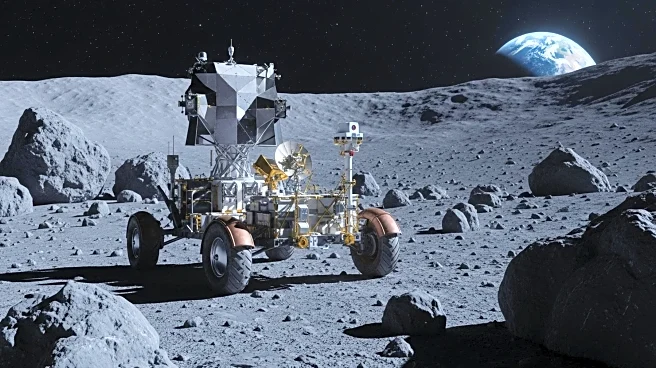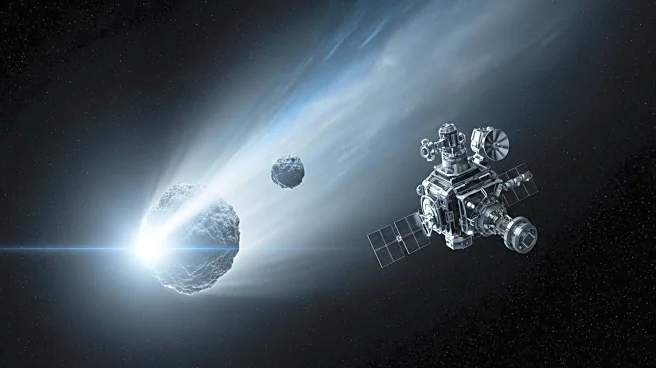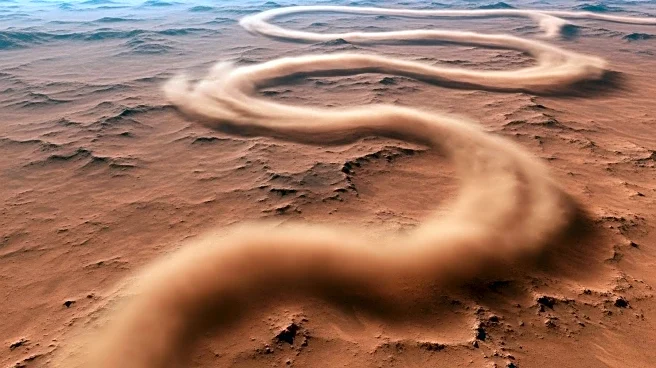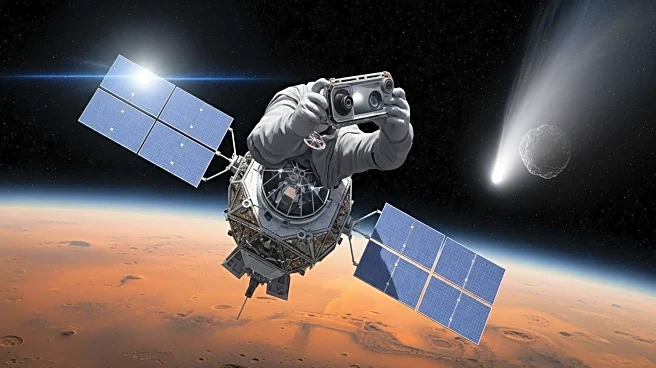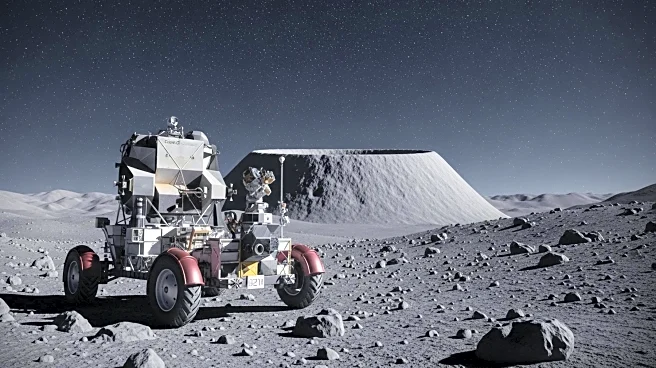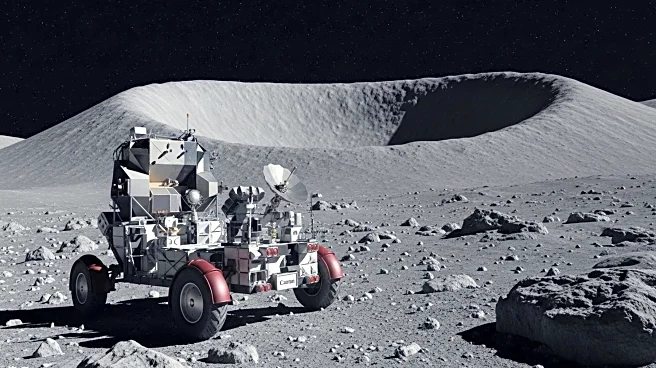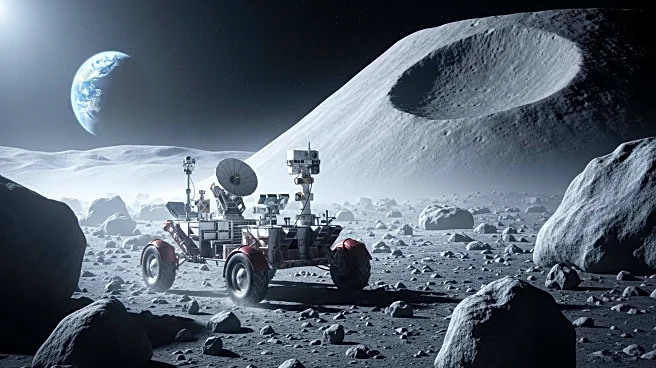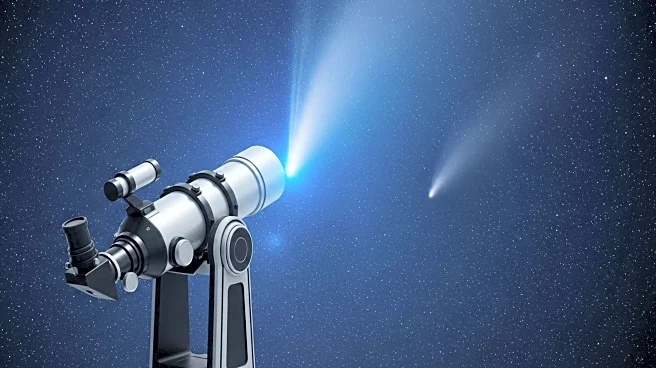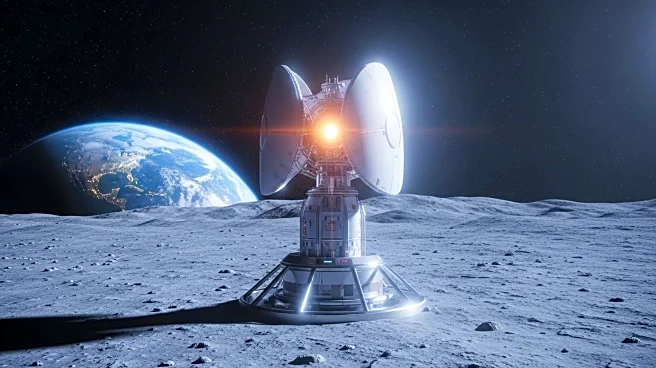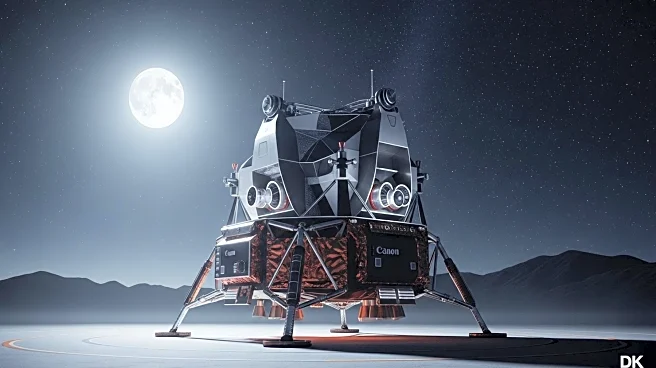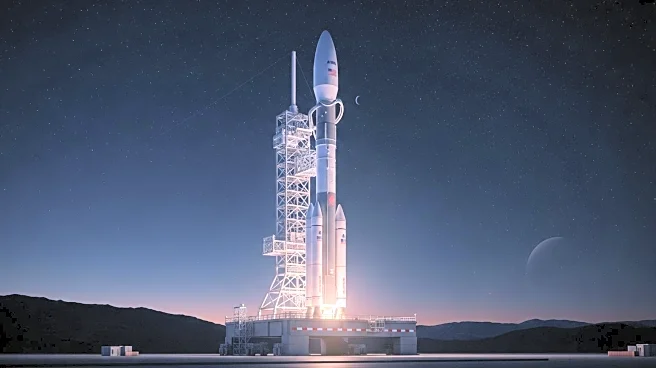What is the story about?
What's Happening?
NASA's Artemis program is set to explore the moon's south pole, potentially uncovering significant clues about the moon's formation. Research led by Jeffrey Andrews-Hanna from the University of Arizona suggests that the South Pole-Aitken basin, formed by a massive asteroid impact 4.3 billion years ago, holds vital information about the moon's violent early history. The study, published in Nature, indicates that the basin's elongated shape reveals the asteroid likely struck from the north, contrary to previous beliefs. The Artemis missions aim to land on the down-range rim of the basin, where ejecta from deep within the moon's interior is concentrated, offering a unique opportunity to study the moon's largest and oldest impact basin.
Why It's Important?
The exploration of the moon's south pole by the Artemis missions is crucial for understanding the moon's geological history and its formation. The findings could provide insights into the asymmetry between the moon's near and far sides, which has puzzled scientists for years. The concentration of KREEP-rich material on the moon's near side has led to intense volcanism, shaping the moon's surface. By studying the South Pole-Aitken basin, researchers hope to unravel the mysteries of the moon's crust and mantle evolution, potentially impacting future lunar exploration and our understanding of planetary science.
What's Next?
As the Artemis missions progress, astronauts will collect samples from the moon's south pole, which will be analyzed by scientists worldwide, including at the University of Arizona. These samples are expected to reveal more about the moon's early evolution than previously thought. The missions will also provide remote sensing data to enhance our understanding of the moon's surface composition, aiding in the development of future lunar exploration strategies.
Beyond the Headlines
The study of the moon's south pole could have broader implications for planetary science, offering a window into the early solar system's dynamics. Understanding the moon's formation and evolution may also inform theories about other celestial bodies and their development. The Artemis missions represent a significant step in human space exploration, potentially paving the way for future crewed missions to Mars and beyond.
AI Generated Content
Do you find this article useful?
